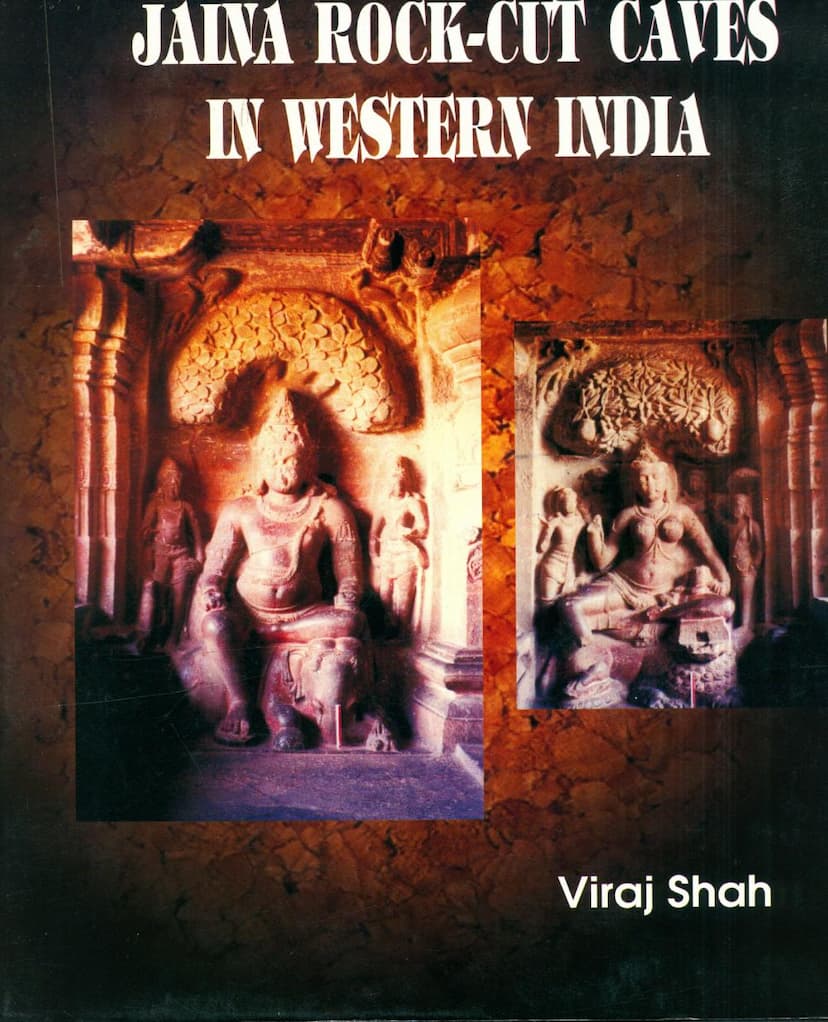Jaina Rock Cut Caves In Western India Part 02
Added to library: September 2, 2025

Summary
Here's a comprehensive summary of the provided Jain text, "Jaina Rock Cut Caves in Western India Part 02" by Viraj Shah, based on the introductory and structural information:
Book Title: Jaina Rock Cut Caves in Western India Part 02 Author: Viraj Shah Publisher: Agam Kala Prakashan Publication Year: 2008
Overview:
This book, a significant contribution to the study of Jainism in Western India, focuses on the Jaina rock-cut cave architecture of the region, with a special emphasis on Maharashtra. While prominent Buddhist and Brahmanical cave sites like Ajanta, Ellora, and Elephanta are well-known, the Jaina caves of Maharashtra, with the notable exception of those at Ellora, have largely remained lesser-known and under-researched. Viraj Shah's work aims to rectify this by bringing these neglected sites to light.
Scope and Content:
The book meticulously documents approximately seventy Jaina caves scattered across the hilly regions of Western India. These caves represent a substantial period of excavation, spanning from the 1st century BCE to the 14th-15th century CE, with the majority dating to the 9th to 14th-15th centuries CE.
The core of the study involves:
- Detailed Documentation: Each cave is described in minute detail, covering its architectural features, iconographic elements, and stylistic characteristics.
- Analytical Chronological Framework: The author establishes a framework for understanding the chronological development of these caves.
- Historical Contextualization: The caves are placed within the broader historical and cultural milieu of contemporary society, including discussions on patronage and the Jainas' continued engagement with rock-cut architecture.
- Site-Specific Analysis: The placement of each cave site within its physical and cultural landscape is examined.
- Focus on Digambara Caves: The study highlights that these are primarily Digambara Jaina caves, which, while often plain and rough in excavation following regional architectural trends, are rich in iconographic content, reflecting the specific interests of their patrons.
- Influence of Socio-Economic Factors: The excavation of these caves is analyzed against the backdrop of reviving trade activities and evolving socio-religious contexts.
- Significance as Late Examples: The book emphasizes that these caves represent the only surviving examples of the later phase of rock-cut architecture.
Author's Motivation and Approach:
The author's journey began with an initial impression of monotony in the Jaina caves at Ellora compared to the elaborate Brahmanical ones. However, upon closer examination, she recognized that this apparent simplicity was a reflection of the ascetic nature of the sect and its specific iconographic program. Her research was driven by the realization that information on these caves was scarce and scattered, with many scholars unaware of their existence. The book was initially a doctoral dissertation, updated with recent publications, and presented in a more reader-friendly format with tabular data where possible. The author acknowledges the need for detailed, though sometimes tedious, descriptions to document these neglected sites, which are further enriched by numerous line drawings and photographs.
Key Themes and Findings:
- Under-appreciated Heritage: The book underscores the importance of Jaina rock-cut architecture, which has been overshadowed by other religious traditions.
- Continuity of Tradition: It demonstrates the Jainas' sustained patronage and engagement with rock-cut architecture over a significant period.
- Iconographic Richness: Despite often plain architectural exteriors, the caves are noted for their wealth of iconographic representations.
- Socio-Cultural Significance: The caves serve as valuable evidence of the socio-religious and economic life of Jainism in Western India during the medieval period.
- Challenges in Documentation: The author highlights the difficulties in locating and documenting these sites, as they are often neglected and forgotten even by local populations.
- Modern Interventions: The book touches upon the contemporary efforts by Jain communities to "develop" these ancient sites, which can alter their original character and underscores the need for proper documentation before further changes occur.
Structure of the Book:
The book is organized into several chapters, providing a comprehensive exploration of the topic:
- Chapter 1: Introduction: Provides an overview of Jaina caves across India and specifically in the Maharashtra region, including the physical features, political history, and the philosophical and iconographic aspects of Jainism.
- Chapter 2: Description and Chronology of Caves: This forms the core of the book, offering detailed descriptions and chronological assessments of numerous individual cave sites across Western India, including Pale, Dharashiva, Ambejogai, Kharosa, Ellora (early and later caves), Mangi-Tungi, Pandu Lena, Patne, Chambhara Lena, Anjaneri, Ankai-Tankai, Tringalwadi, Washale or Vase, Daulatabad, Junnar, Bhamer, Chandor, Mohida-tarf-haveli, and Dhumalwadi or Nandagiri.
- Chapter 3: Architectural and Iconographic Trends: Analyzes the common architectural and iconographic features, tracing the development of these elements and discussing various influences.
- Chapter 4: Site: Location and Importance: Examines the concept of sacred space in Jainism, discusses Jaina texts related to tirthas in Maharashtra, and details the epigraphic and literary references for various sites.
- Chapter 5: Cultural Milieu of Jaina Caves: Socio-Religious Background: Delves into the history and spread of Jainism in Maharashtra, its socio-religious and economic base, religious practices, sub-sects, interactions with other religions, and patronage.
- Chapter 6: Conclusion: Summarizes the key findings regarding architectural and iconographic features, site selection, and the socio-economic context of the Jaina caves.
The book also includes extensive lists of figures and plates, providing visual documentation of the sites and their sculptures, along with references and a glossary of architectural terms.
In essence, Viraj Shah's "Jaina Rock Cut Caves in Western India Part 02" is a vital resource for understanding a less-explored but significant aspect of Indian rock-cut architecture, offering deep insights into the artistic, religious, and cultural history of Jainism in Western India.